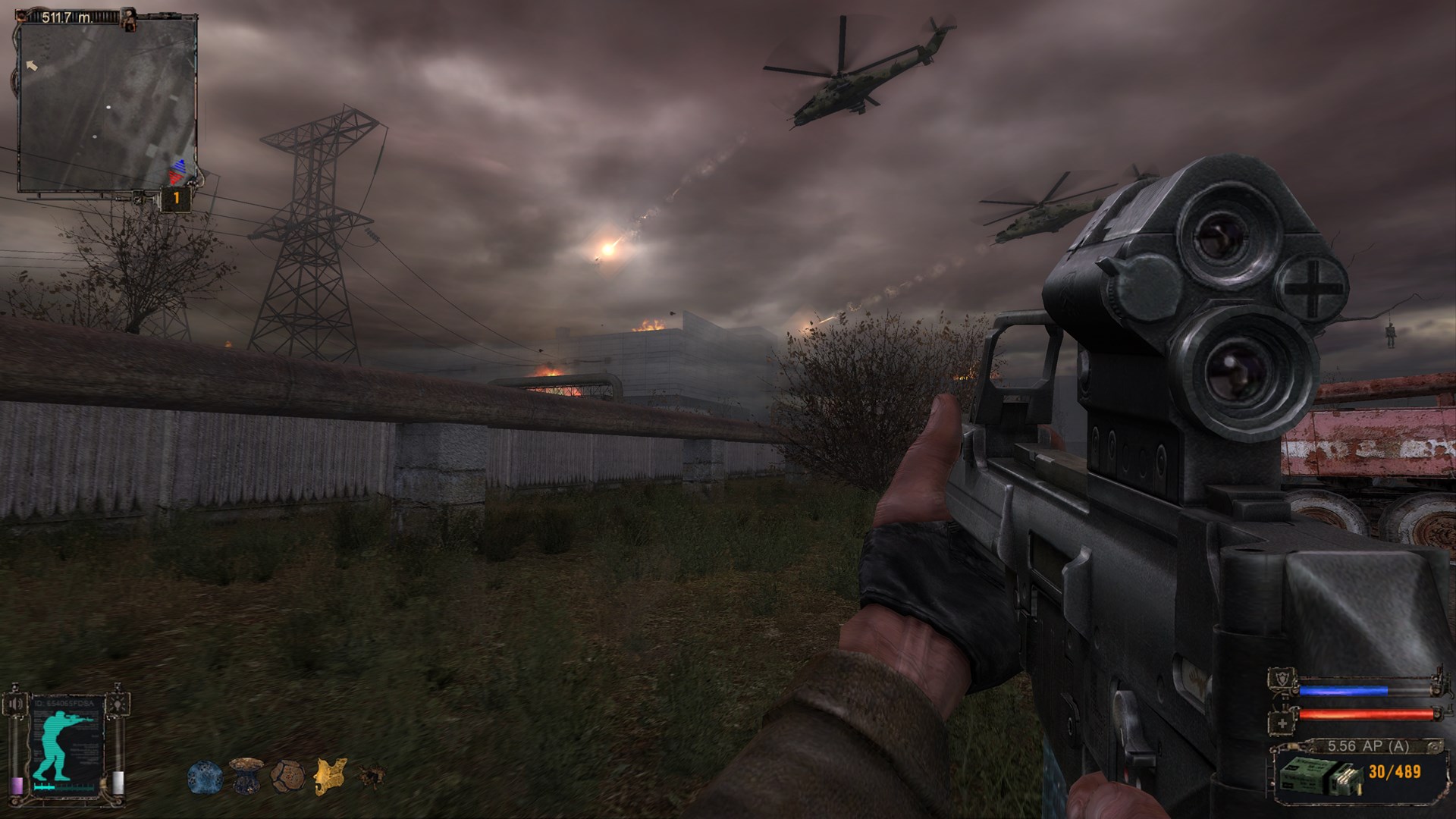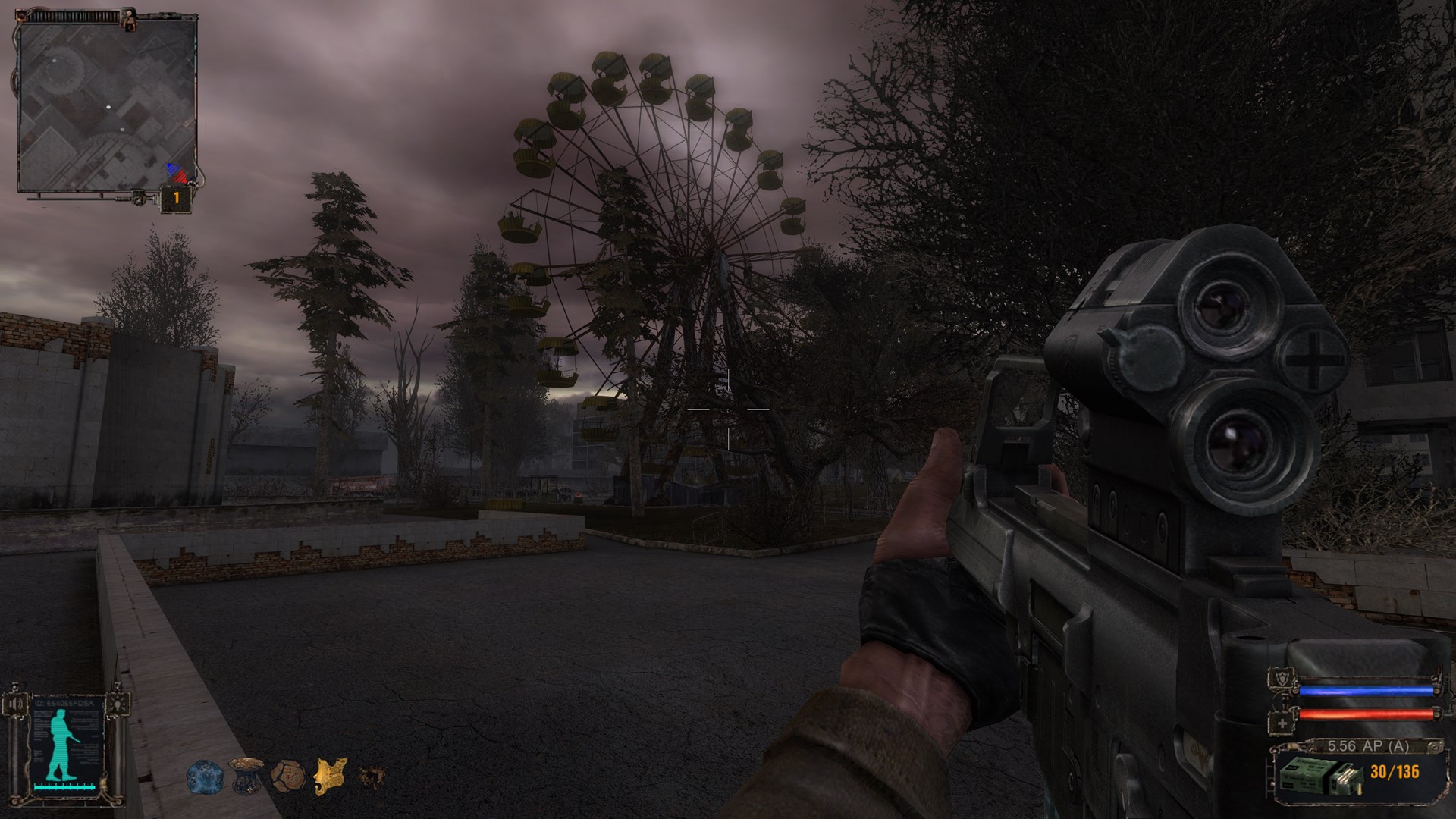Why Stalker: Shadow of Chornobyl's difficulty modes have divided players for over a decade
Please let me get in my Zone.

There’s an area in Stalker: Shadow of Chornobyl that’s simply called The Garbage. It’s basically a miles-wide bin for radioactive waste and heavy machinery, the latter presumably used in the wake of the 1986 disaster. Back then, crane drivers in lead-lined cabins carried out their work in total blindness—their every move governed by radio operators who watched from a safe distance as the leaky reactor building was encased in a great concrete sarcophagus.
In Stalker’s fictionalised take on the region, The Garbage hosts some of the hottest and most frequent conflict. Visit one of its rubbish dumps for more than a few minutes and you’ll get caught up in a firefight between the Bandits and the Loners—who, despite their name, are among the most populous and organised factions in the game. Hang around for too long afterwards to pick bandages off the bodies, and you’ll likely get swept up in a second wave of shooting. This is a battle without end, where no resolution can ever be finally agreed upon.

The same is true of the dispute over Stalker’s difficulty, which has been raging among fans for 17 years. If only GSC Game World had named one of their settings ‘Normal’, I might have managed to keep out of it. Alas, the four modes that pop up when starting a new game—Novice, Stalker, Veteran and Master—were just ambiguous enough to lead me to Google, and a debate that has occupied my brain for weeks now.
Much of the discussion, which plays out across forums, subreddits, and YouTube, is rooted in one indisputable fact about Stalker: it’s hard to hit things. Often in Shadow of Chornobyl, you’ll spot an enemy in the mid-distance, and find that potshots from your starting pistol don’t tend to connect with their target at range. This, it seems to me, is by design: a way to push you to close the gap and take on some personal risk. The tension ramps up every time you creep towards a gang of bandits, their flashlights flitting across the walls of a ruined building.
The trouble starts when players start trying to solve the accuracy of their weapons through tweaks to the game, rather than taking the time to adapt to its peculiarities. You’ll find various long-running threads in which old hands recommend switching to Master mode, Stalker’s highest difficulty. There, they claim, bullets hit harder and with greater accuracy, for both you and your enemies—paradoxically making the game easier to get to grips with.

It’s not clear where this idea first took off, but it’s been sustained by one of PC gaming’s most common archetypes: the forum-dwelling gatekeeper who has long since left lower difficulties behind. In a way, this is the last person you want to listen to when getting into a game—their brain so finely tuned to the ruleset and rhythms of their chosen obsession that they can no longer remember their earliest sessions with it.
There is an unvarnished cruelty to Stalker’s world that suits a gnarly difficulty setting.
I’d rather get my advice from modders—those who’ve had their hands in Stalker’s files, and are therefore operating on a level beyond gut feeling. They often cite this chart—which suggests that hit probability in Stalker doesn’t change, no matter what difficulty mode you select. What does appear to shift as you climb the ranks to Master mode is your own damage resistance—ultimately dropping down to zero on the most extreme setting.
The biggest gaming news, reviews and hardware deals
Keep up to date with the most important stories and the best deals, as picked by the PC Gamer team.
That tracks with my own experience of Master mode, which of course I tried to stick with for a while. A friend told me they’d finished the game this way, but admitted they were reading Roadside Picnic at the time, and so perhaps took a masochistic pleasure in being dropped into a realm of brutal survivalism. In fairness, there is an unvarnished cruelty to Stalker’s world that suits a gnarly difficulty setting. In that sense, it’s the precursor to DayZ—which these days is freezing players to death in Russia’s far east.

Playing on Master lends every scrap with a passing bandit or mutated boar a momentous weight. When even a glancing hit from a rifle can send you scrambling for bandages to staunch the bleeding, your approach becomes more considered, and conflict avoidance a necessary part of resource management. It’s a match for the dark fantasy of squinting suspiciously at the horizon—wondering whether a stranger walking the cracked tarmac wants to trade, or take your life.
But the highest difficulty also robs Stalker of some of its strengths. One is the enemy AI, a Half-Life-esque intelligence that isn’t afraid to flank and surprise you, in a way that’s become unfashionable in single-player shooters since. On Master difficulty, a single shotgun-toting bandit can sneak around the side and end the action with an instakill. It’s zero-sum, and leaves little room for you to dance with your opponents. Rather than scrambling to react to a developing situation, you’re reaching for the reload button instead.
Then there’s Stalker’s promise of a dynamic world, where NPCs can live and die according to your actions. Out in The Garbage, I helped a loner named Bis defend a scrapyard from encroaching bandits. In the aftermath, it emerged that Bis was a fugitive, wanted for GBH and two murders after taking revenge on a pair of vicious muggers. “I’ve done well in this place,” he said, “but the list of my crimes has got a little longer too. I try to fight the lawless just as I did on the outside. I train up rookies and teach them to survive in the Zone.”

No sooner had he finished speaking than another gang of bandits rolled in, killing Bis and his trainees in seconds. Given the vulnerability bestowed on me by Master mode, I felt powerless to step in and stop them. It might make for a striking anecdote, but on Stalker’s highest difficulty, it’s easy to feel that any good you do in the Zone will be swiftly wiped away.
For now, I’ve plumped for Veteran, the Goldilocks option that sits between the lower modes and Master. It’s a choice that means I’m regularly exposed to the harsh reality of the Zone, a cold wind that teaches caution. But there’s also enough room to make and correct the odd mistake, a provision which leaves Stalker a little more human and easier to love. Who knows whether that’ll be the end of it, though. The debate over Stalker’s difficulty has sucked me in, like a physics-bending anomaly, and I’ll be lucky to ever emerge from it again.
Jeremy Peel is an award-nominated freelance journalist who has been writing and editing for PC Gamer over the past several years. His greatest success during that period was a pandemic article called "Every type of Fall Guy, classified", which kept the lights on at PCG for at least a week. He’s rested on his laurels ever since, indulging his love for ultra-deep, story-driven simulations by submitting monthly interviews with the designers behind Fallout, Dishonored and Deus Ex. He's also written columns on the likes of Jalopy, the ramshackle car game. You can find him on Patreon as The Peel Perspective.

